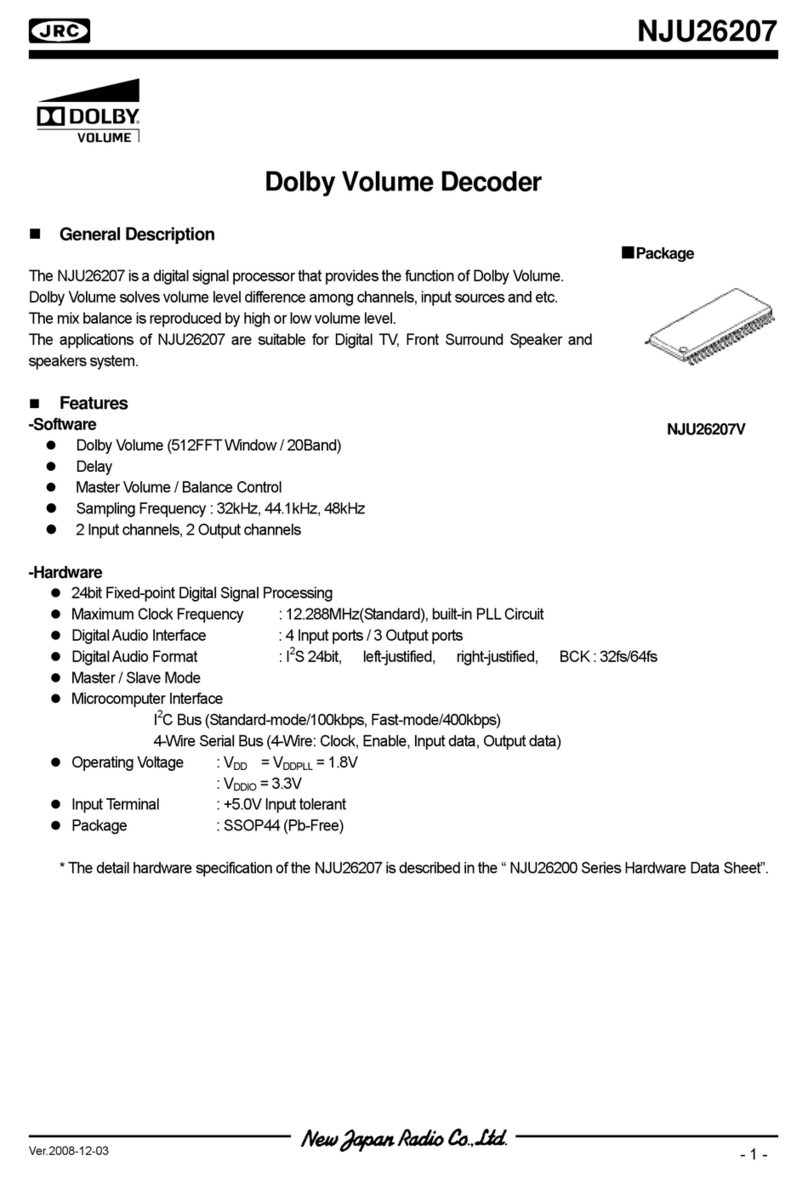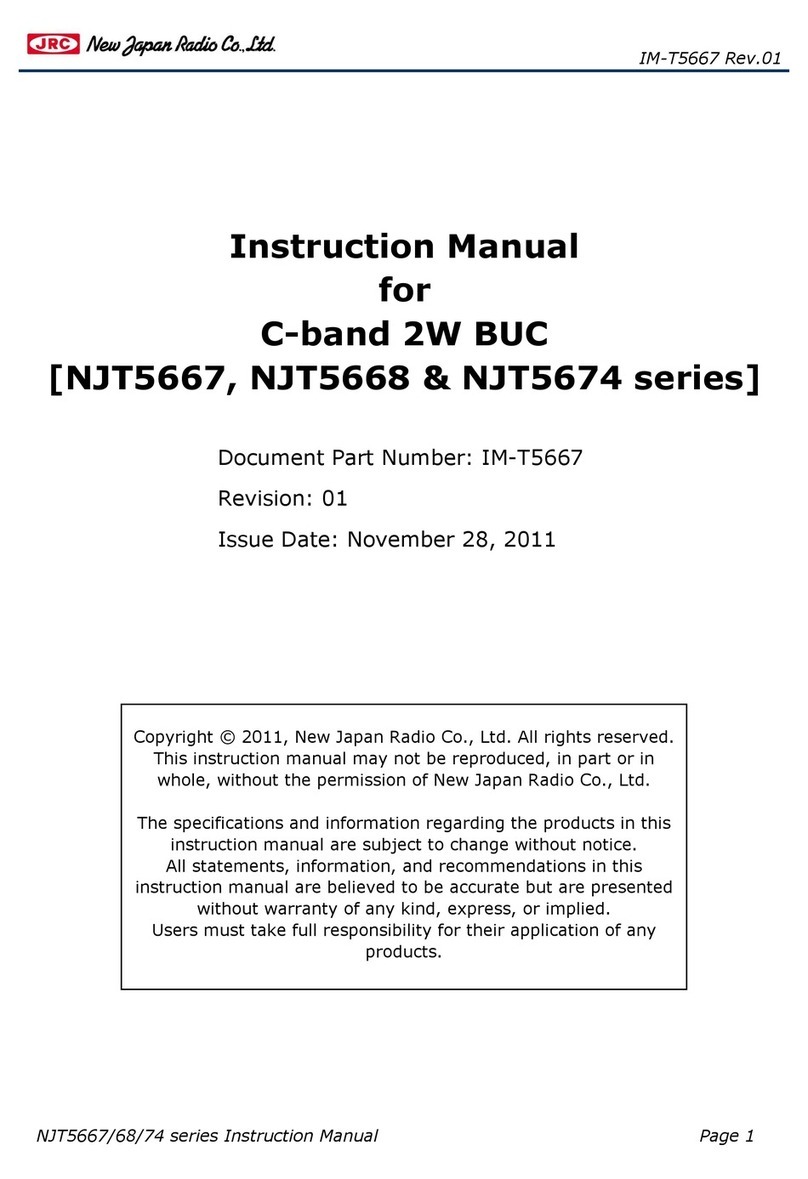
NJU26209
-
-
Ver.2008-12-04
Pin Description
Table 1 Pin Description
Pin No. Symbol I/O Function
1 SDI3 I Audio Data Input ch.3 (LS/RS)
2 SDI2 I Audio Data Input ch.2 (C/SW)
3 SDI1 I Audio Data Input ch.1 (L/R)
4 SDI0 I Audio Data Input ch.0 (L/R)
5 LRI I LR Clock Input
6 VDDIO - I/O Power Supply +3.3V
7 BCKI I Bit Clock Input
8 VSS - DSP Core Power Supply GND
9 VDD - DSP Core Power Supply +1.8V
10 TEST * I
for test
connect with VSSIO through 3.3-ohm resistance.
11 MUTEb * I Master Volume Status after reset ‘1’: 0dB, ‘0’: Mute
12 WDC * OD Watchdog Clock output pin (Open drain output)
13 PROC * I
Signal Processing after reset ‘1’: Normal Processing, ‘0’: Waiting for a
Command without Processing
14 VSSIO - I/O Power Supply GND
15 VDDIO - I/O Power Supply +3.3V
16 SEL I Host Interface Selection ‘1’: Serial Interface, ‘0’: I
2
C bus
17 VDDPLL - PLL Power Supply +1.8V
18 VSSPLL - PLL Power Supply GND
19 VSS - DSP Core Power Supply GND
20 VDD - DSP Core Power Supply +1.8V
21 CLKOUT O OSC Clock Output
22 CLK I OSC Clock Input (12.288MHz)
23 VSSIO - I/O Power Supply GND
24 VDDIO - I/O Power Supply +3.3V
25 RESETb I Reset (RESETb=’0’: DSP Reset)
26 TEST I for test (connect to VDDIO)
27 TEST I for test (connect to VSSIO)
28 TEST I for test (connect to VSSIO)
29 AD1/SDIN I I
2
C Address (I
2
C mode) / Serial In (4-wire serial mode)
30 AD2/SSb I I
2
C Address (I
2
C mode) / Serial enable (4-wire serial mode)
31 SCL/SCK I I
2
C SCL (I
2
C mode) / Serial clock (4-wire serial mode)
32 SDA/SDOUT I/O I
2
C SDA (I
2
C mode) / Serial Out (4-wire serial mode)
33 VDDIO - I/O Power Supply +3.3V
34 MCK O A/D, D/A clock output (buffer output of a CLK pin)
35 BCKO O Bit Clock Output
36 LRO O LR Clock Output
37 SDO3 O Audio Data Output ch.3 (LM/RM)
38 SDO2 O Audio Data Output ch.2 (C/SW)
39 SDO1 O Audio Data Output ch.1 (L/R)
40 SDO0 O Audio Data Output ch.0 (LS/RS)
41 VDDIO - I/O Power Supply +3.3V
42 VSSIO - I/O Power Supply GND
43 VSS - DSP Core Power Supply GND
44 VDD - DSP Core Power Supply +1.8V
Note : I : Input
O : Output
OD : Open Drain Output
I/O : Bi-directional
Pins symbol with * : Connect with VDDIO or VSSIO through 3.3kΩresistance





























